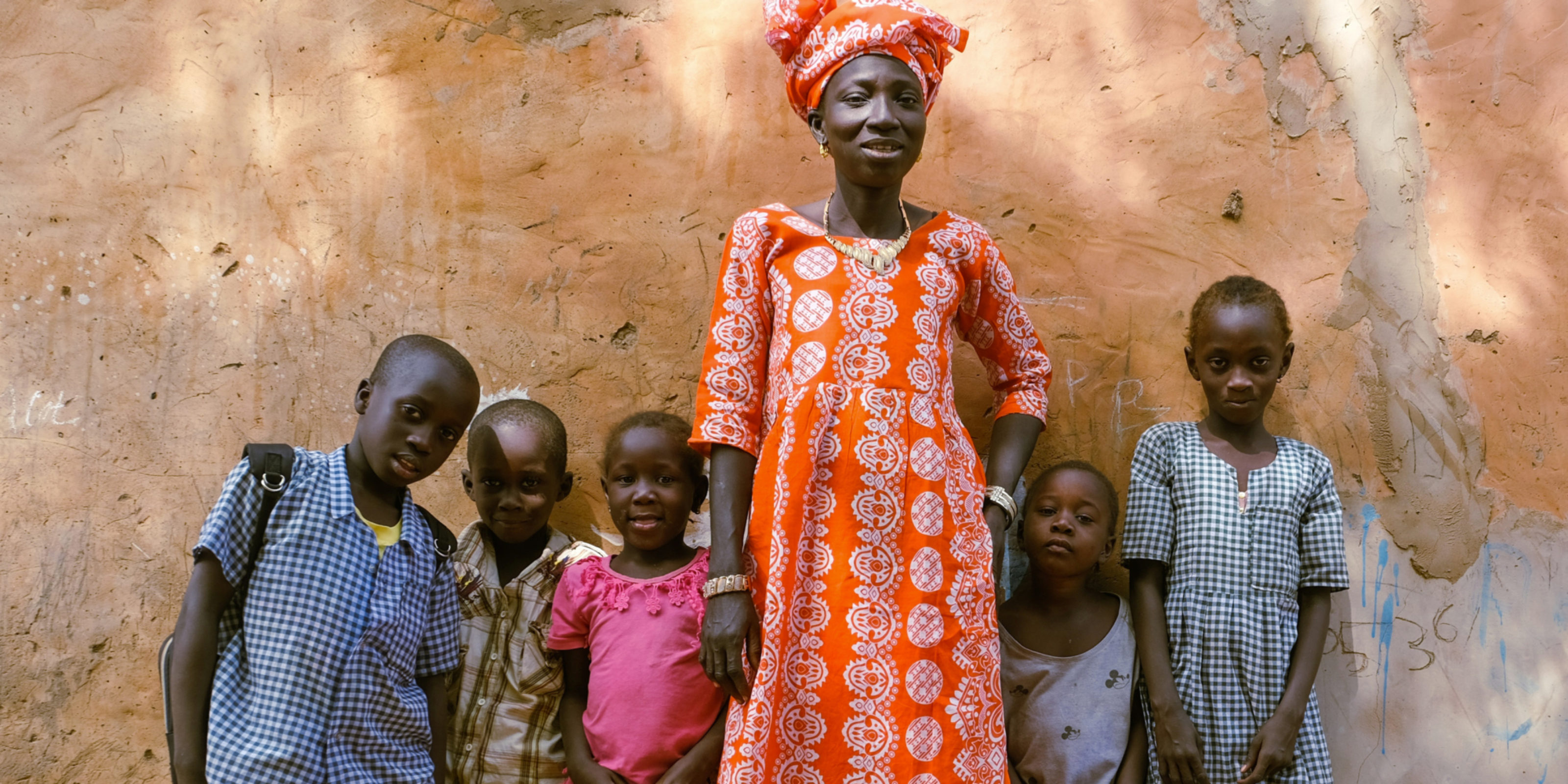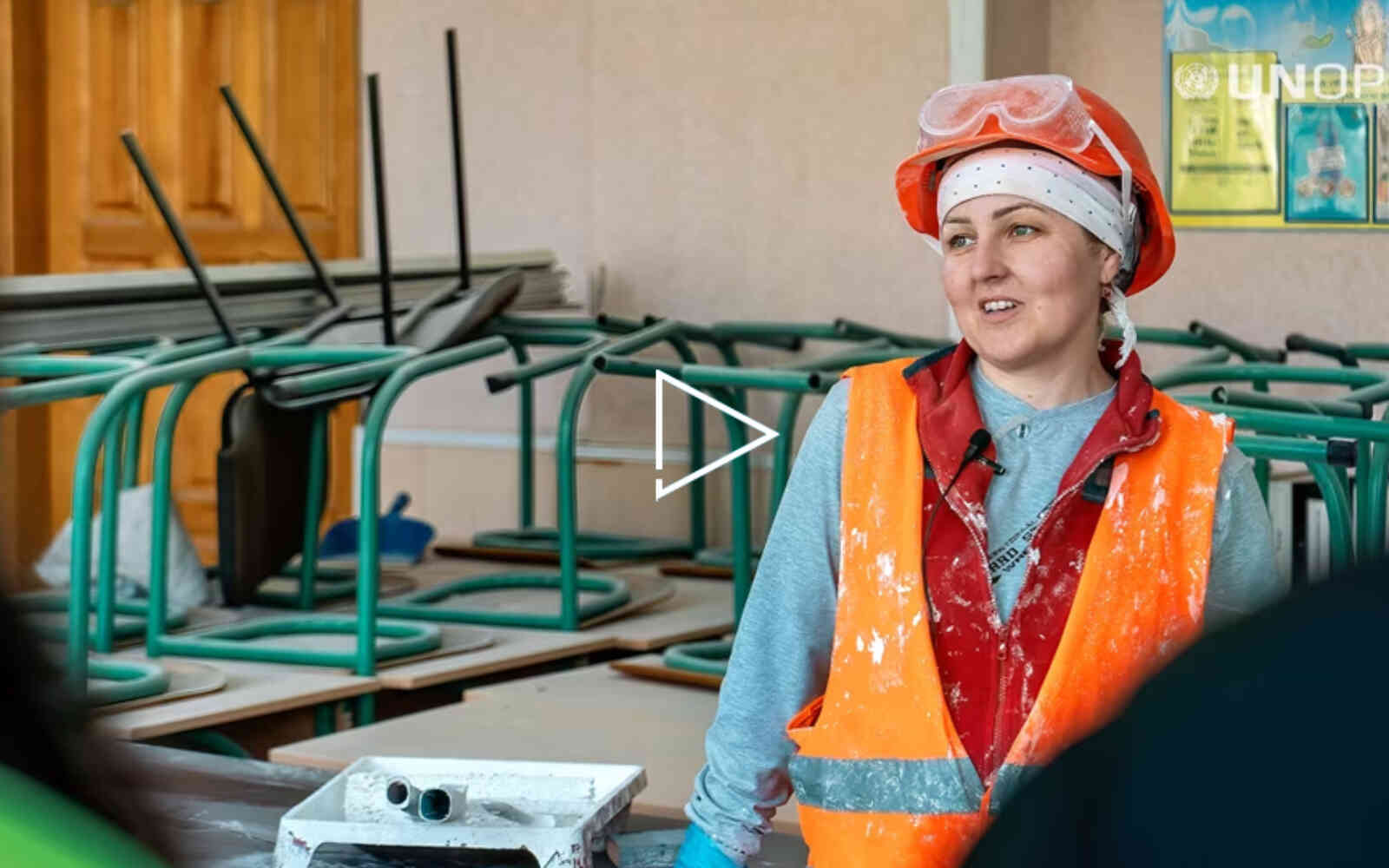The United Nations Office for Project Services (UNOPS)

Connecting communities and advancing gender equality in The Gambia
The Gambia is a small fragile country in West Africa – one that is faced with growing poverty, food insecurity and malnutrition. Over the last decade, major climate-related crises like drought and flooding as well as disease outbreaks like Ebola have left the population of 2.1 million people more vulnerable.
In rural and hard-to-reach areas, roads that link communities up with major motorways are crucial for connecting vulnerable people to essential services and economic opportunities – such as schools, markets and healthcare facilities. Yet, across the country, many of these so-called ‘feeder roads’ have been left dilapidated and barely accessible, or in some instances non-existent. And this has posed significant challenges to the women, men and children needing to get to places beyond their own communities – to earn an income, to see a doctor, to buy food, to attend school.
Challenges in The Gambia
The country stretches 450 kilometres along The Gambia river and is almost completely bordered by Senegal, except for a small stretch of land that fronts the Atlantic Ocean. Within the country, nearly half the population lives in poverty and gender inequality persists at some of the highest levels in the world.
The Gambia only produces about half of the food it needs to sustain its population, depending on imports for the rest. The agricultural sector, based mainly on small-scale farming in rural areas, is heavily impacted by erratic rainfall and vulnerable to climate-related crises. Low food production is then met with the challenges of safe and timely transportation.
“We suffer a lot when we have goods to sell. You pick your produce from the garden with a donkey cart [...] You bring it home then a car will pick it up,” explains Tunko Jadama who lives in the Alkali Kunda village in the North Bank Region.




Drivers find it difficult to come to the village to help us transport our produce to the market [...] Our goods used to stay with us in the village without sale due to [the] bad road.”
Accessing essential health and education services can also be a major challenge, something Binta Ceesay understands well.
“To have a means of transportation to take the sick to the hospital can be difficult [...] I was once taken to the hospital while pregnant. They tied a donkey to a cart and I was transported to the hospital at night. I nearly gave birth on the donkey cart. If it was a car this wouldn't have happened. All of this was caused by the bad road. The way the donkey cart was running that caused a problem for me and made my delivery difficult,” she recalls.
Did you know?
- With an average of 176 people per square kilometre, The Gambia is one of the most densely populated countries in Africa.

Not just roads – feeder roads
Roads are an essential means of transporting food and other essential items to vulnerable communities throughout The Gambia. They are also a means for people to access key services like health, education and markets. Despite a network of high-capacity roads that connect the country’s capital Banjul, situated on the African west coast, with its eastern-most areas, many rural communities along the way face challenges in accessing the network due to poor or barely existing feeder roads.
Improving The Gambia’s network of lower-capacity feeder roads is an important means of enhancing food security, and advancing social and economic development across the country – by providing employment, increasing household income and helping reduce poverty among vulnerable populations including women-headed households and youth in rural Gambia.

Creating opportunities for women
More than 200 local women have been employed in construction works linked to a project that is doing just that – with the labour-based construction team comprising more than 60 per cent women. This is an unprecedented milestone of women participation in the rural infrastructure sub-sector in The Gambia, supporting women’s empowerment and helping to close the inequality gap in the country.
“We have never had women working on road construction sites before and UNOPS has shown us that it is possible,” says the Vice President of The Gambia, Dr. Isatou Touray.
Fatou Sanneh, from Alkali Kunda in the North Bank Region of the country, says she was surprised when women were offered the opportunity to work on the project.
“In my community, we have always believed road construction to be for men only,” she says.
Did you know?
- Women play an important part of the road construction teams and make up over 60 per cent of the workers.
I would like to continue in this work – maybe one day I will become a supervisor or road engineer.”




Roads to access, security, opportunity
Today, with more than 100 kilometres of roads that link rural villages with major motorways being rehabilitated or constructed across The Gambia, communities living in remote areas already feel more connected to towns and cities.
“Sick people are not dying on the road to the clinic. And women don't also deliver on the road to the clinic [...] Students don't struggle to get to their schools,” says Binta Ndow.

“If the road is constructed it will be good for everyone. And if I'm going to school, I'll reach the school on time,” says 14 year old Gorgi Jallow.
The work is generating a sense of hope of a better way of life in the future.
“Now our business will go smoothly if we harvest our produce. We can take it to Farafenni [nearest town] because there is a road from our village to Farafenni. Or retailers can come from Farafenni to our village, buy our goods and take them out, because now we have a good road,” says Kaddy Marong, a construction worker on the project.
“Now if we farm our gardens, we sell our produce at a good price,” she adds.

Project details
Since 2017, with €10.3 million in funding from the European Union, UNOPS has been working with the government of The Gambia to help improve the country’s network of feeder roads.
As part of the project, UNOPS has also piloted a grievance escalation mechanism, in collaboration with The Gambia’s Ministry of Women, Children and Social Welfare, to prevent sexual exploitation and abuse of workers. This mechanism will also help facilitate the resolution of payment issues of workers as well as issues surrounding land disputes during the implementation phase of the project. It is expected that in the future this pilot will be adopted by the government and scaled-up as a social safeguard measure in the infrastructure sector.
The project is also supporting the capacity of The Gambia’s National Road Authority to effectively manage and maintain the country’s road network. This includes helping the authority to develop a comprehensive road network map to assist with future planning, and establishing new axle load control measures to reduce road damage caused by heavy vehicles, increasing the sustainability of rehabilitated roads.
Construction work is taking place along the Upper River Region, the North Bank Region and the Central River Region of The Gambia, and will focus on sustainability and building local capacity across the country.
The project is following environmental management requirements of the National Environment Agency. This will prevent or minimize soil erosion, dust and noise, and damage to the water supply following the rural road rehabilitation. UNOPS is also ensuring that international health and safety standards are applied to every aspect of the project through training and ensuring the correct health and safety equipment is worn at project sites at all times.














